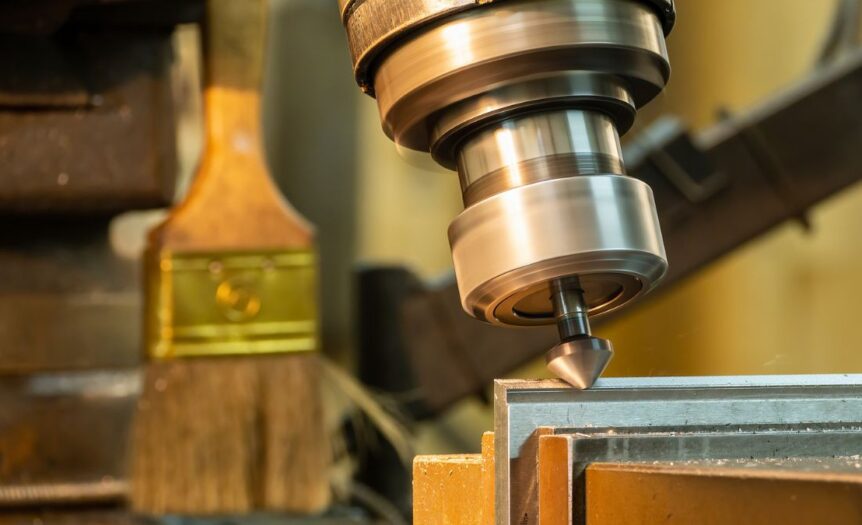Beveling tools are invaluable in the metalworking and fabrication industry. They allow professionals to create angles on the edges of materials for a seamless weld or aesthetic finish. However, like all industrial equipment, using beveling tools involves certain risks.
Understanding and adhering to safety measures can prevent accidents and ensure a high-quality result in any project. Let’s look at four important safety tips for using beveling tools and how they can help you avoid common hazards.
Wear Appropriate Personal Protective Equipment (PPE)
One of the most critical safety measures when using beveling tools is wearing appropriate personal protective equipment (PPE). Some examples of this PPE include:
- Safety glasses or goggles to protect your eyes from flying debris.
- Hearing protection, such as earplugs or earmuffs, to prevent hearing damage from the loud noise of the tools.
- Gloves to protect your hands from cuts, burns, and other injuries.
- Protective clothing, such as long-sleeved shirts and pants, to cover exposed skin.
Using beveling tools and proper PPE can significantly reduce the risk of accidents and injuries. Wearing all required PPE and ensuring it fits properly before operating equipment is essential.
Familiarize Yourself With the Tool
Before beginning any project, you must thoroughly understand how your beveling tool works. This step means reading the instruction manual cover to cover, familiarizing yourself with all the tool’s features and functions, and knowing its limitations. It’s also important to practice using the tool on some scrap material, if possible. This will give you a feel for how it operates in a real-world setting. There are many different kinds of pipe beveling joints, and each requires a different tool, so it’s essential to know which one you need for your specific project.
Use the Tool in a Safe and Stable Environment
Working with beveling tools involves lots of force, speed, and precision. As such, setting up your work area in a safe and stable environment is crucial. This setup ensures you have enough space to move freely and comfortably without obstacles or clutter. Keep your workbench clean and organized, and place it on a stable surface. Additionally, make sure to securely fasten the tool to your workbench or mount it on a sturdy stand. This step will prevent the tool from tipping over or causing vibrations that can lead to accidents.
Follow Proper Maintenance and Inspection Procedures
Like any other equipment, beveling tools require regular maintenance and inspections to ensure they function correctly. Follow the manufacturer’s recommended maintenance schedule and inspection procedures to identify and address potential issues before using the tool. This schedule includes:
- Regularly checking for any loose or damaged parts
- Cleaning and lubricating components as needed
- Replacing worn-out parts promptly
Keeping your tools in top condition can prevent accidents caused by malfunctioning equipment.
Using beveling tools safely is crucial to avoid accidents and ensure a successful project. By following all these tips, you can protect yourself and those around you while achieving high-quality results in your metalworking projects. Always prioritize safety, and never hesitate to ask for assistance or guidance if you’re unsure how to use a beveling tool properly.










 Deering Estate
Deering Estate
 Massage Envy South Miami
Massage Envy South Miami
 Calla Blow Dry
Calla Blow Dry
 My Derma Clinic
My Derma Clinic
 Sushi Maki
Sushi Maki
 Sports Grill
Sports Grill
 The Healthy Kitchen
The Healthy Kitchen
 Golden Rule Seafood
Golden Rule Seafood
 Malanga Cuban Café
Malanga Cuban Café

 Kathleen Ballard
Kathleen Ballard
 Panter, Panter & Sampedro
Panter, Panter & Sampedro
 Vintage Liquors
Vintage Liquors
 The Dog from Ipanema
The Dog from Ipanema
 Rubinstein Family Chiropractic
Rubinstein Family Chiropractic
 Your Pet’s Best
Your Pet’s Best
 Indigo Republic
Indigo Republic




 ATR Luxury Homes
ATR Luxury Homes


 2112 Design Studio
2112 Design Studio
 Hamilton Fox & Company
Hamilton Fox & Company
 Creative Design Services
Creative Design Services
 Best Pest Professionals
Best Pest Professionals
 HD Tree Services
HD Tree Services
 Trinity Air Conditioning Company
Trinity Air Conditioning Company
 Cisca Construction & Development
Cisca Construction & Development
 Mosquito Joe
Mosquito Joe
 Cutler Bay Solar Solutions
Cutler Bay Solar Solutions


 Miami Royal Ballet & Dance
Miami Royal Ballet & Dance
 Christopher Columbus
Christopher Columbus
 Pineview Preschools
Pineview Preschools
 Westminster
Westminster
 Carrollton
Carrollton
 Lil’ Jungle
Lil’ Jungle
 Frost Science Museum
Frost Science Museum
 Palmer Trinity School
Palmer Trinity School
 South Florida Music
South Florida Music
 Pinecrest Orthodontics
Pinecrest Orthodontics
 Dr. Bob Pediatric Dentist
Dr. Bob Pediatric Dentist
 d.pediatrics
d.pediatrics
 South Miami Women’s Health
South Miami Women’s Health

 The Spot Barbershop
The Spot Barbershop
 My Derma Clinic
My Derma Clinic




 Miami Dance Project
Miami Dance Project

 Rubinstein Family Chiropractic
Rubinstein Family Chiropractic
 Indigo Republic
Indigo Republic

 Safes Universe
Safes Universe
 Vintage Liquors
Vintage Liquors
 Evenings Delight
Evenings Delight





 Atchana’s Homegrown Thai
Atchana’s Homegrown Thai
 Baptist Health South Florida
Baptist Health South Florida

 Laser Eye Center of Miami
Laser Eye Center of Miami
 Visiting Angels
Visiting Angels
 OpusCare of South Florida
OpusCare of South Florida

 Your Pet’s Best
Your Pet’s Best





 HD Tree Services
HD Tree Services
 Hamilton Fox & Company
Hamilton Fox & Company


 Creative Design Services
Creative Design Services